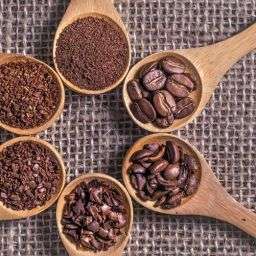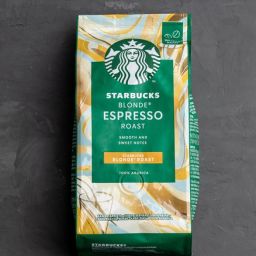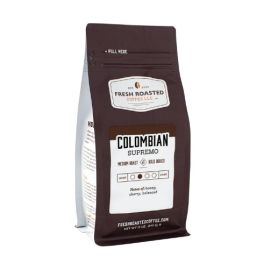
Espresso and Coffee Types
Espresso is more than just a strong cup of coffee. It’s a unique brewing method that transforms your everyday coffee beans into a rich, concentrated shot of deliciousness. But what exactly is espresso, and how do different coffee roasts play into this?
- Espresso Defined: At its core, espresso is a coffee brewing method where a small amount of nearly boiling water is forced through finely-ground coffee beans. This process creates a concentrated coffee shot known for its bold flavor and creamy top layer, called crema.
- Coffee Roast Levels:
- Light Roast: These beans are light brown, with a mild flavor and no oil on the surface. They’re perfect for those who enjoy a subtler coffee taste.
- Medium Roast: A bit darker, these beans have a more balanced flavor, aroma, and acidity. They’re the jack-of-all-trades in the coffee world.
- Dark Roast: Dark brown, sometimes almost black beans, with a shiny, oily surface. They pack a punch with their strong, bold flavor.
Espresso Brewing Method
Brewing espresso is like conducting a symphony. It’s all about precision and harmony between the grind, temperature, and pressure.
- The Brewing Process:
- Grind your coffee beans to a fine consistency.
- Tamp the grounds into the portafilter. This step is crucial for even water distribution.
- The espresso machine takes over, pushing hot water through the grounds at high pressure.
- In about 25-30 seconds, you’ve got yourself a shot of espresso.
- Why Pressure and Temperature Matter:
- Pressure: Espresso machines typically use 9 bars of pressure. This high pressure is what extracts the coffee oils and flavors, creating that rich espresso taste.
- Temperature: The ideal brewing temperature is around 200°F. Too hot, and your coffee burns. Too cool, and you’ll miss out on some flavors.
Choosing the Right Coffee for Espresso
When it comes to making the perfect espresso, your choice of coffee is key. It’s not just about grabbing any bag of beans off the shelf. There are a few things to consider:
- Roast Level: This can range from light to dark, and each level brings its own unique flavor to your espresso.
- Bean Origin: Where your coffee comes from affects its taste. Beans from different regions have distinct flavor profiles.
- Flavor Profile: Think about whether you prefer a smooth, balanced taste or something with more kick and complexity.
Light Roast Coffee for Espresso
Light roast coffee is like the unsung hero of the espresso world. It’s not as common as its darker counterparts, but it has a lot to offer.
- Characteristics: Light roast beans are typically more acidic and have a wider range of subtle flavors. They can bring notes of fruit, flowers, or even a hint of sweetness.
- Brewing Tips:
- Use a slightly finer grind to extract more flavor.
- Experiment with the brewing temperature. Sometimes a slightly cooler temperature works better for light roasts.
Medium Roast Coffee for Espresso
Medium roast coffee is like the all-rounder in the espresso game. It’s just right for those who want a balance of flavor and body.
- Versatility: It’s great for a variety of espresso drinks, from a straight shot to a creamy latte.
- Flavor Profile: Expect a smooth, rich taste with hints of caramel and a balanced acidity.
Dark Roast Coffee for Espresso
Dark roast coffee and espresso are like best friends. They just get each other.
- Flavor: Expect bold, robust flavors with less acidity. Dark roasts often have notes of chocolate or spice.
- Milk-Based Drinks: Dark roasts shine in lattes and cappuccinos. Their strong flavor cuts through the milk beautifully.
- Brewing Tips:
- Use a slightly coarser grind to avoid over-extraction.
- A lower brewing temperature can prevent bitterness.
Temperature Control and Espresso Machines
Getting the temperature just right is like finding the sweet spot for your espresso. It’s a game-changer.
- Why Temperature Matters: Different roast levels react differently to heat. Light roasts may need a higher temperature to fully express their flavors, while dark roasts can turn bitter if it’s too hot.
- Adjusting Temperature: Most espresso machines let you tweak the brewing temperature. Play around with it to find what works best for your favorite roast.
Super-Automatic Espresso Machines and Coffee Choices
Super-automatic espresso machines are like the busy coffee lover’s dream. But, they do have their quirks, especially when it comes to coffee choices.
- Limitations: These machines often lack the same level of control as manual or semi-automatic machines, particularly in temperature and grind settings.
- Roast Level Impact:
- Light roasts can be tricky in super-automatics due to their need for precise temperature control.
- Dark roasts are more forgiving but watch out for those really oily beans. They can clog up your machine.
Ground Coffee and Espresso Machines
When it comes to espresso, the grind is everything. It’s like the key that unlocks all those delicious flavors.
- Grind Size Matters: For espresso, you want a fine grind. Too coarse, and your espresso will be weak and under-extracted. Too fine, and you might end up with a bitter taste.
- Pre-Ground vs. Whole-Bean:
- Pre-Ground Coffee: It’s convenient, sure, but it can lose its freshness and flavor quickly.
- Whole-Bean Coffee: Grinding beans just before brewing keeps the flavor intact. It’s a bit more work, but your taste buds will thank you.
Best Coffee for Milk-Based Espresso Drinks
Choosing the right coffee for milk-based espresso drinks is like picking the perfect dance partner – it’s all about compatibility.
- Coffee Recommendations:
- Light roasts can be overpowered by milk, so they’re better for drinks with less milk.
- Medium roasts are versatile and can complement a wide range of milk-based drinks.
- Dark roasts are ideal for lattes and cappuccinos, where their bold flavors can shine through the milk.
- Roast Level Impact:
- The roast level of your coffee can make or break your milk-based espresso drink. It’s all about finding that balance where the coffee and milk enhance each other.
FAQs
Let’s tackle some of the most common questions about choosing the right coffee for your espresso machine.
- Q: Can I use any coffee for espresso?
- A: Technically, yes. But for the best experience, choose a coffee that suits your taste preferences and works well with your machine’s capabilities.
- Q: Does the roast level really make a difference in espresso?
- A: Absolutely! Light roasts bring out more acidity and subtle flavors, medium roasts offer a balanced profile, and dark roasts provide a bold, robust taste.
- Q: Should I go for pre-ground coffee or whole beans?
- A: Whole beans are generally better because they retain freshness and flavor longer. Grinding just before brewing will give you a more flavorful espresso.
Conclusion
In the world of espresso, the coffee you choose is as important as the machine you brew it in. Here’s a quick recap:
- Roast Level: Pick a roast that matches your flavor preferences. Light for subtlety, medium for balance, and dark for intensity.
- Bean Origin: Experiment with beans from different regions to discover unique flavor profiles.
- Grind and Freshness: Use a fine grind and opt for fresh, whole beans for the best taste.
Remember, making espresso is an art and a science. Don’t be afraid to experiment with different coffees and brewing techniques.









